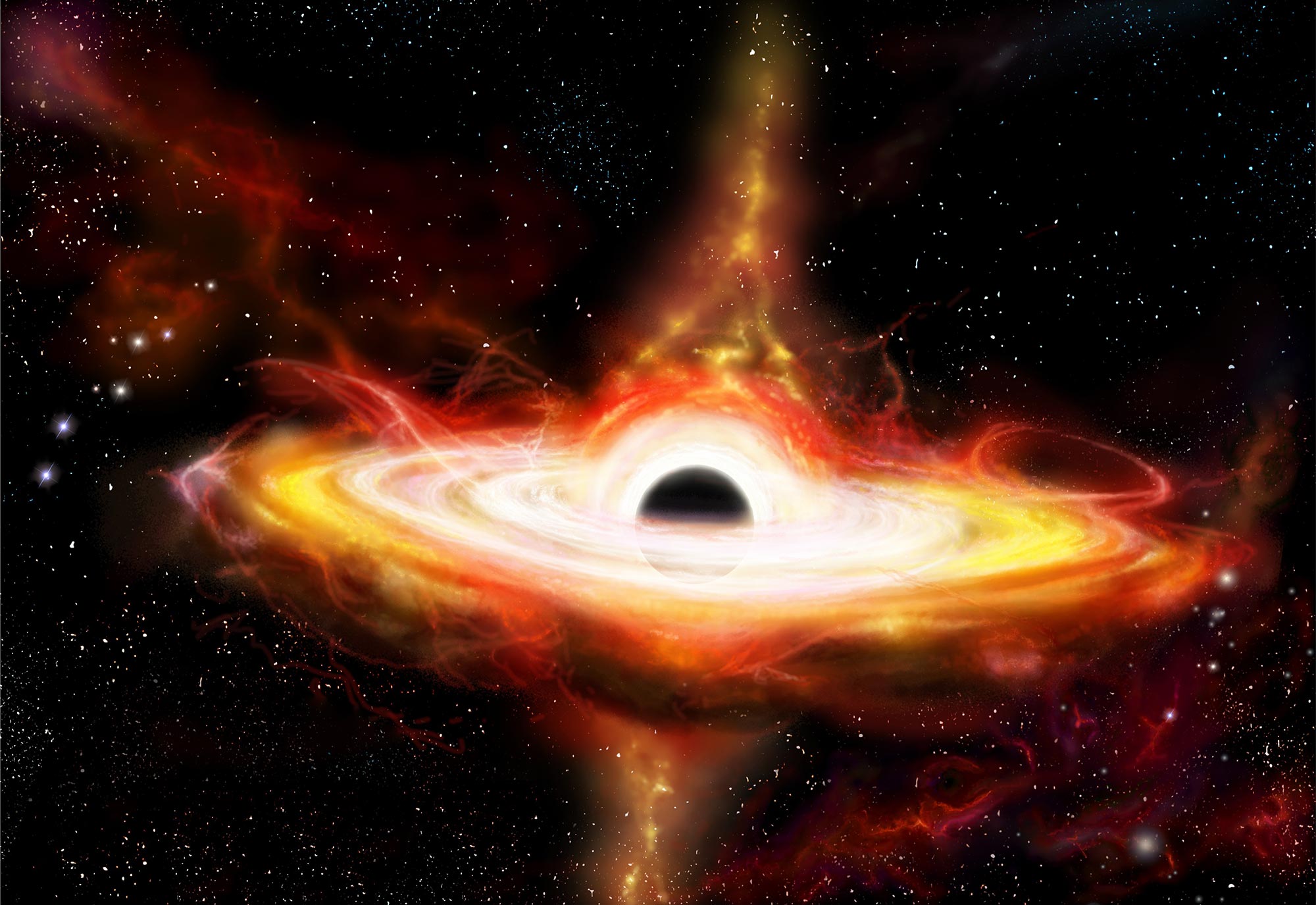
Astrônomos liderados pela Universidade de Durham usaram lentes gravitacionais e simulações de supercomputador na instalação DiRAC-HPC para descobrir um dos maiores buracos negros já encontrados, com uma massa de mais de 30 bilhões de vezes a massa do Sol. Essa técnica inovadora, que simula a luz viajando pelo universo, permitiu aos pesquisadores prever com precisão o caminho da luz, conforme visto nas imagens reais do Telescópio Espacial Hubble. A descoberta foi publicada em Boletins Mensais da Royal Astronomical Society.
Uma equipe de astrônomos descobriu um dos maiores buracos negros já encontrados, aproveitando um fenômeno chamado lente gravitacional.
Gravidade de dobra de luz
A equipe, liderada pela Universidade de Durham, no Reino Unido, usou lentes gravitacionais – onde uma galáxia em primeiro plano dobra e amplia a luz de um objeto mais distante – e simulações de supercomputador na instalação DiRAC HPC permitiram que a equipe estudasse exatamente como a luz é refratada em um buraco negro em uma galáxia a centenas de milhões de anos-luz da Terra.
A equipe simulou centenas de milhares de viagens leves pelo universo, cada simulação contendo uma massa diferente[{” attribute=””>black hole, changing light’s journey to Earth.

An artist’s impression of a black hole, where the black hole’s intense gravitational field distorts the space around it. This warps images of background light, lined up almost directly behind it, into distinct circular rings. This gravitational “lensing” effect offers an observation method to infer the presence of black holes and measure their mass, based on how significant the light bending is. The Hubble Space Telescope targets distant galaxies whose light passes very close to the centers of intervening fore-ground galaxies, which are expected to host supermassive black holes over a billion times the mass of the sun. Credit: ESA/Hubble, Digitized Sky Survey, Nick Risinger (skysurvey.org), N. Bartmann
30 billion times the mass of our Sun
When the researchers included an ultramassive black hole in one of their simulations, the path taken by the light from the faraway galaxy to reach Earth matched the path seen in real images captured by the Hubble Space Telescope.
What the team had found was an ultramassive black hole, an object over 30 billion times the mass of our Sun, in the foreground galaxy – a scale rarely seen by astronomers.
This is the first black hole found using gravitational lensing and the findings were published today (March 29) in the journal Monthly Notices of the Royal Astronomical Society.
Um vídeo mostrando como os astrônomos, usando lentes gravitacionais, descobriram um buraco negro de 30 bilhões de massa solar em uma galáxia a 2 bilhões de anos-luz de distância. Crédito da foto: Universidade de Durham
Flashback para o tempo cósmico
A maioria dos maiores buracos negros que conhecemos está em um estado ativo, no qual a matéria atraída para perto do buraco negro se aquece e libera energia na forma de luz, raios-X e outras radiações.
As lentes gravitacionais permitem estudar buracos negros adormecidos, o que atualmente não é possível em galáxias distantes. Essa abordagem pode permitir que os astrônomos descubram muito mais buracos negros dormentes e ultramassivos do que se pensava e estudem como eles ficaram tão grandes.
A história dessa descoberta em particular começou em 2004, quando um astrônomo da Universidade de Durham, o professor Alastair Edge, ao revisar imagens de um levantamento de galáxias, notou um enorme arco de lentes gravitacionais.
Avanço rápido de 19 anos e com a ajuda de imagens às vezes de resolução extremamente alta[{” attribute=””>NASA’s Hubble telescope and the DiRAC COSMA8 supercomputer facilities at Durham University, Dr. Nightingale and his team were able to revisit this and explore it further.
Exploring the mysteries of black holes
The team hopes that this is the first step in enabling a deeper exploration of the mysteries of black holes, and that future large-scale telescopes will help astronomers study even more distant black holes to learn more about their size and scale.
Reference: “Abell 1201: detection of an ultramassive black hole in a strong gravitational lens” by J W Nightingale, Russell J Smith, Qiuhan He, Conor M O’Riordan, Jacob A Kegerreis, Aristeidis Amvrosiadis, Alastair C Edge, Amy Etherington, Richard G Hayes, Ash Kelly, John R Lucey and Richard J Massey, 29 March 2023, Monthly Notices of the Royal Astronomical Society.
DOI: 10.1093/mnras/stad587
The research was supported by the UK Space Agency, the Royal Society, the Science and Technology Facilities Council (STFC), part of UK Research and Innovation (UKRI), and the European Research Council.
This work used both the DiRAC Data Intensive Service (CSD3) and the DiRAC Memory Intensive Service (COSMA8), hosted by University of Cambridge and Durham University on behalf of the DiRAC High-Performance Computing facility.

“Passionate student. Twitter nerd. Avid bacon addict. Typical troublemaker. Thinker. Webaholic. Entrepreneur.”
